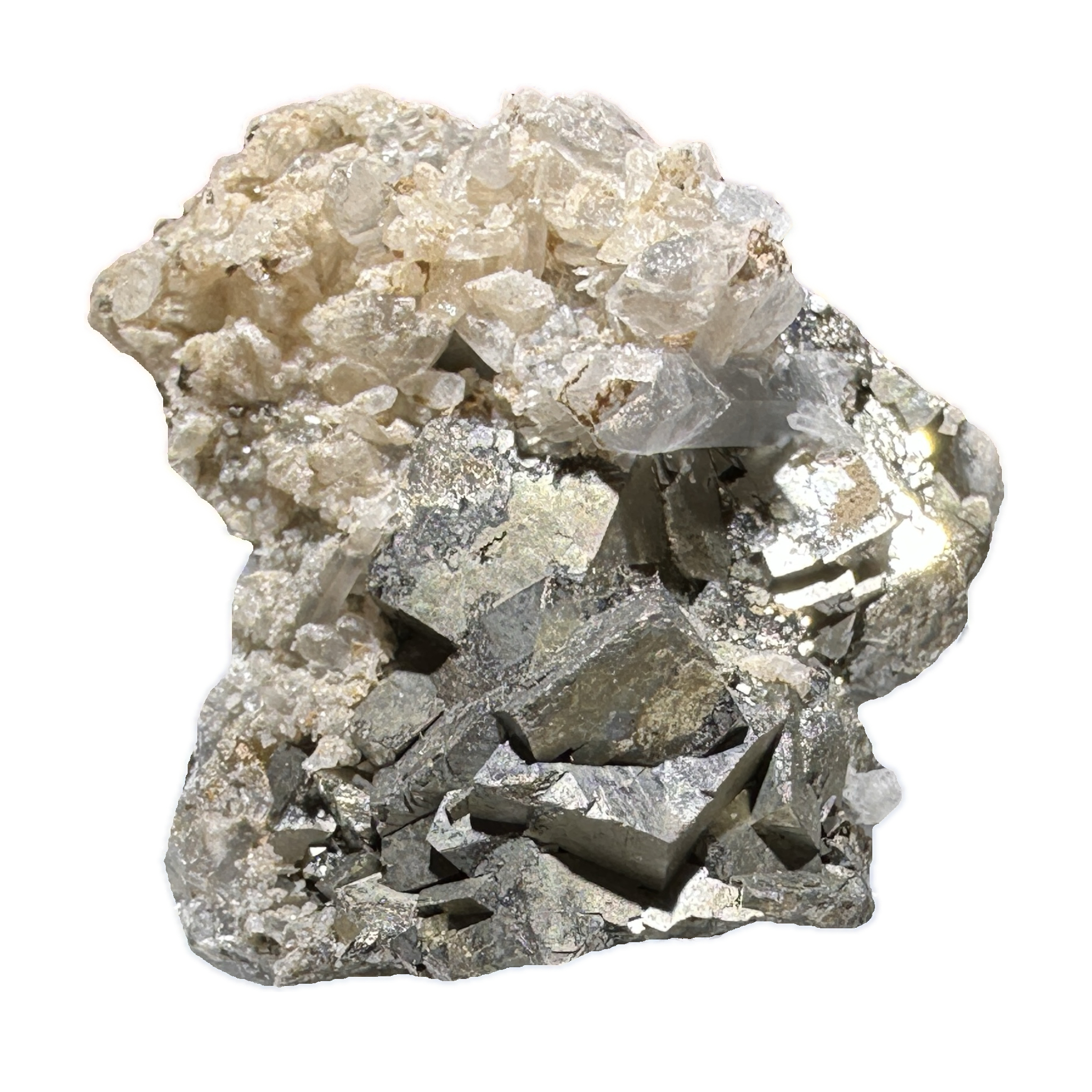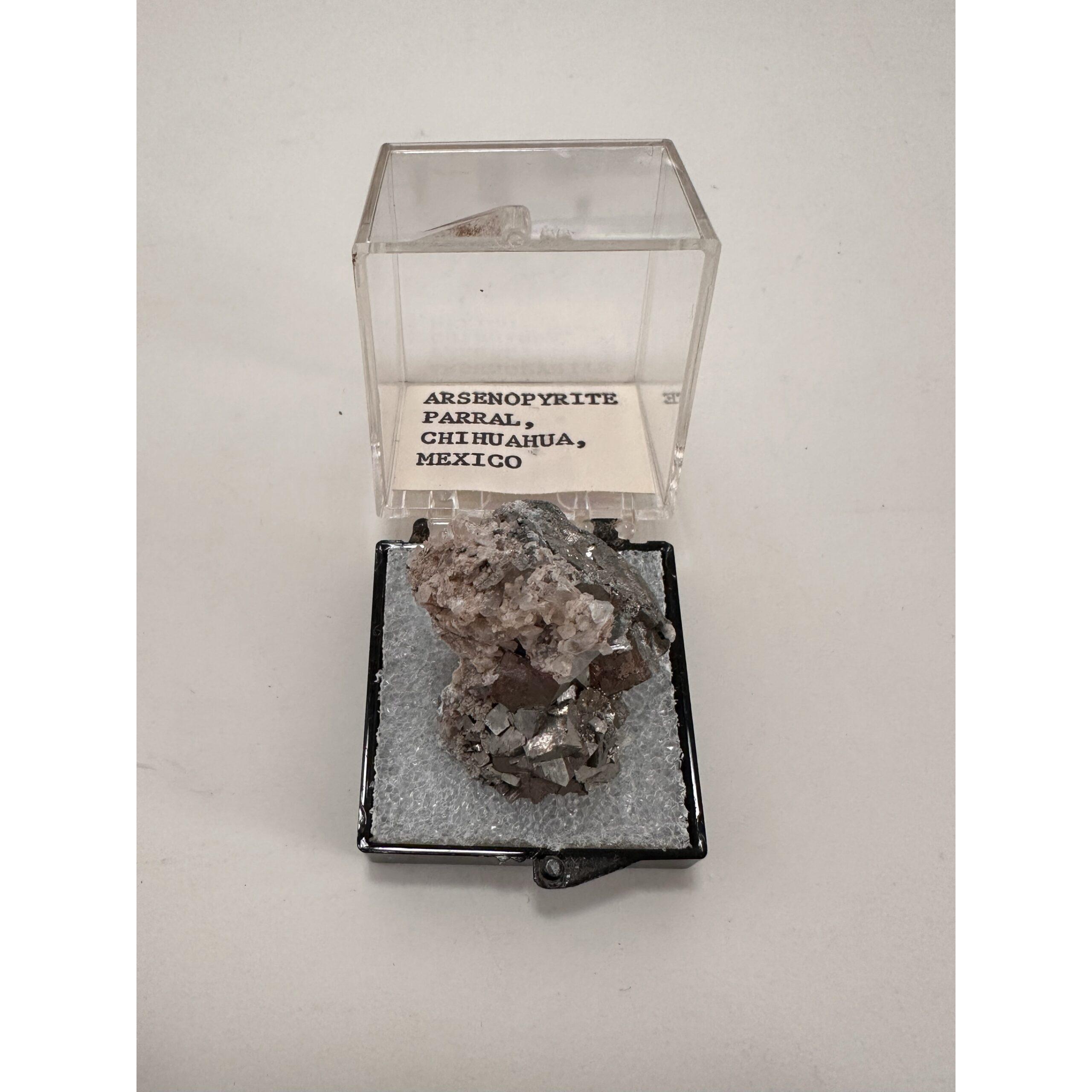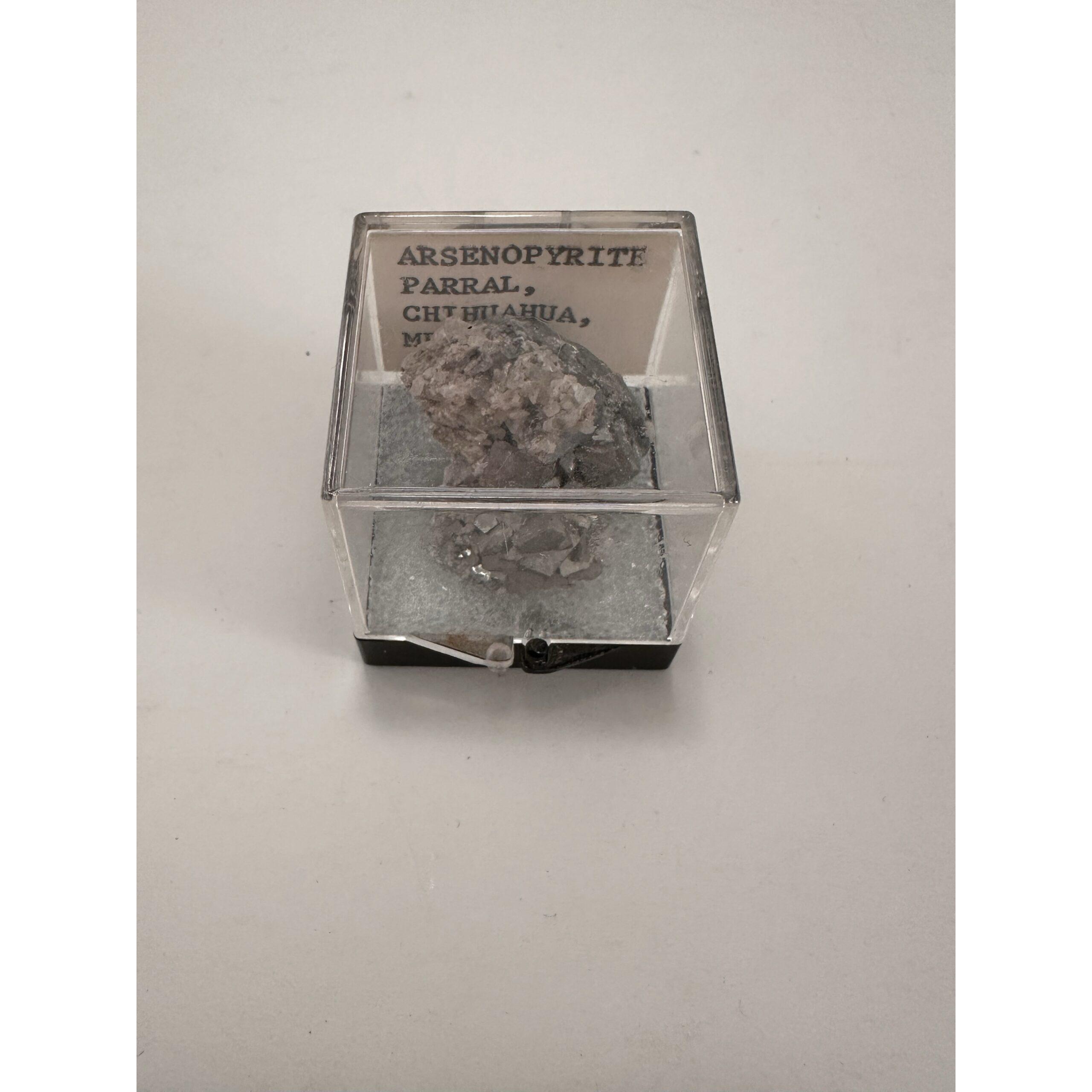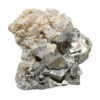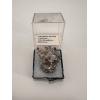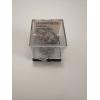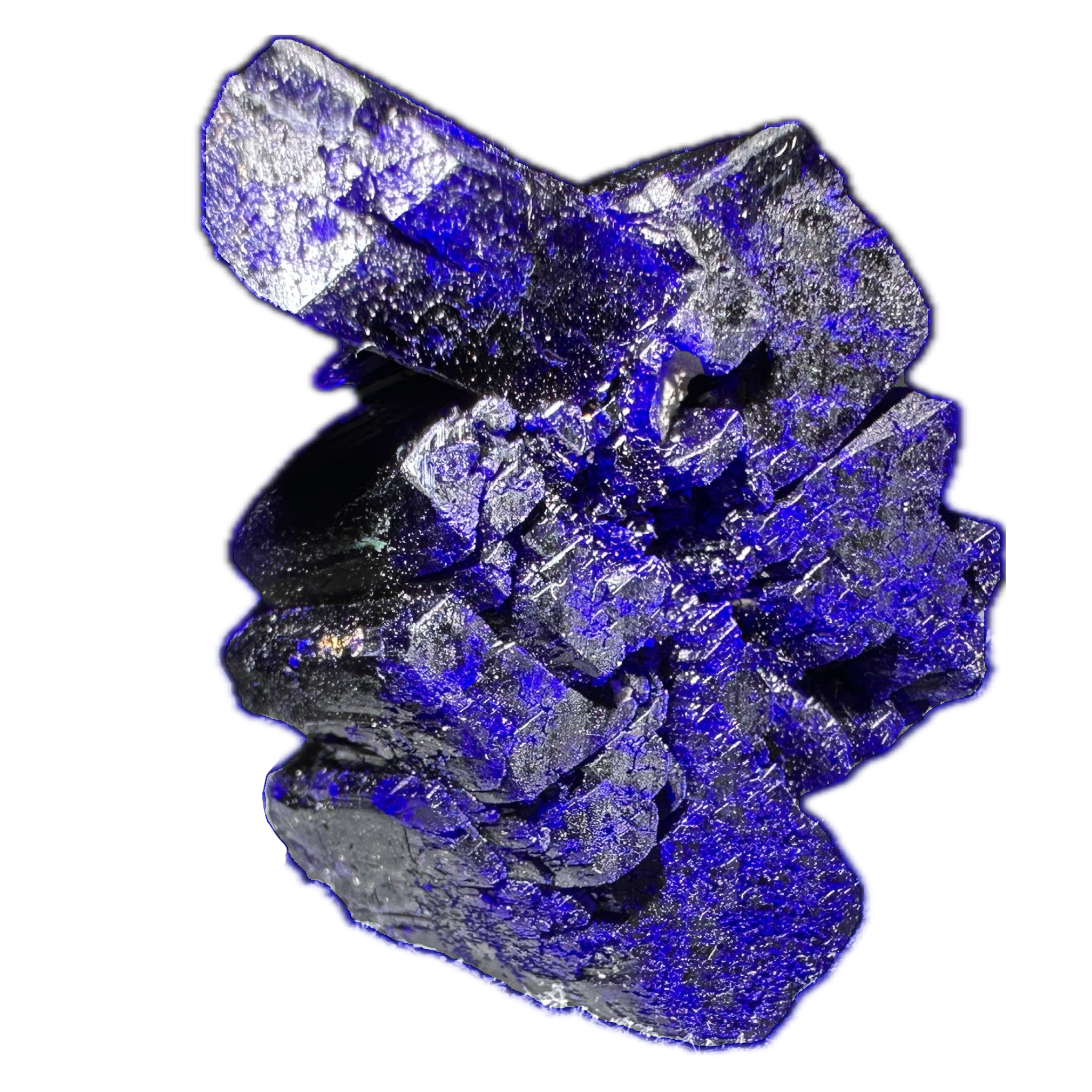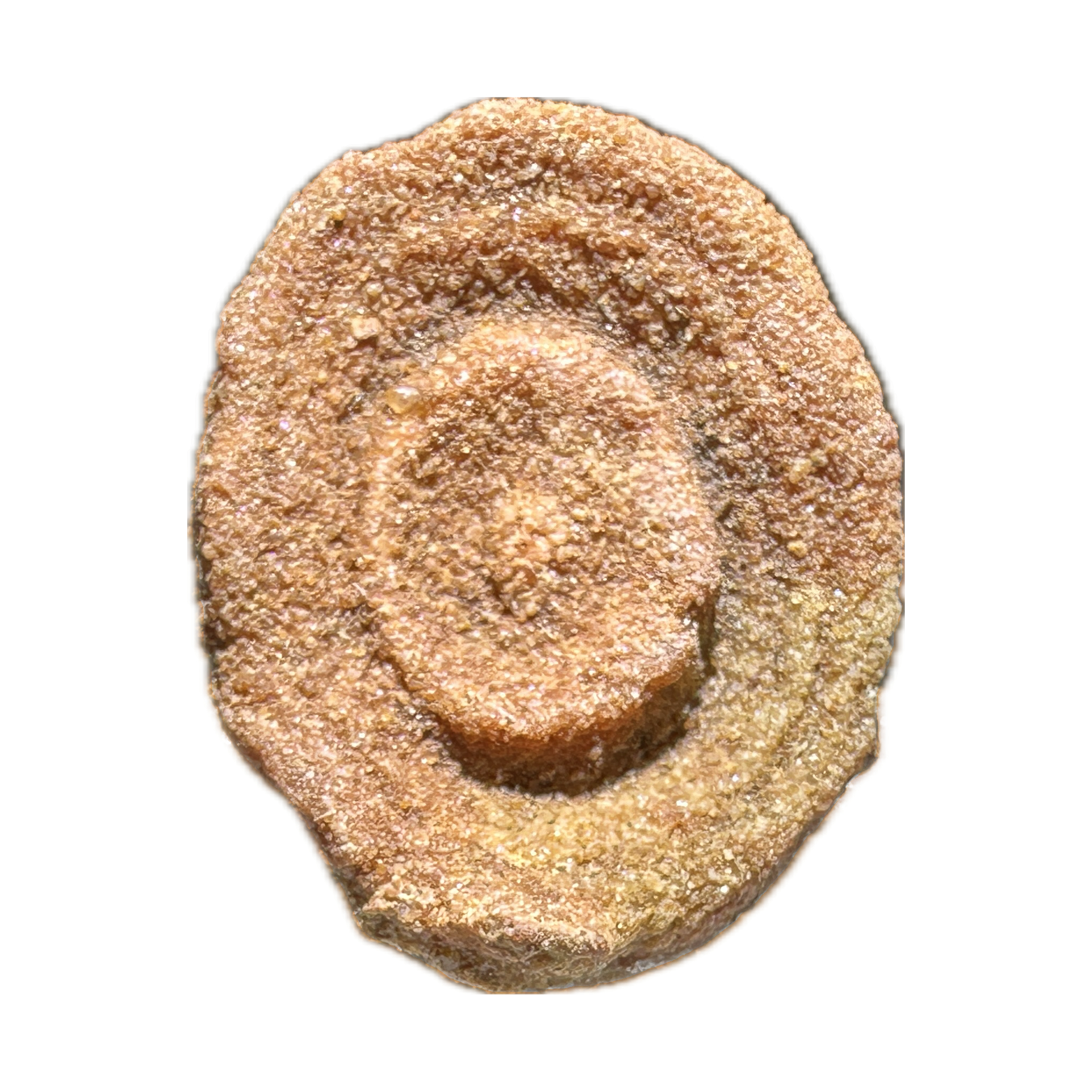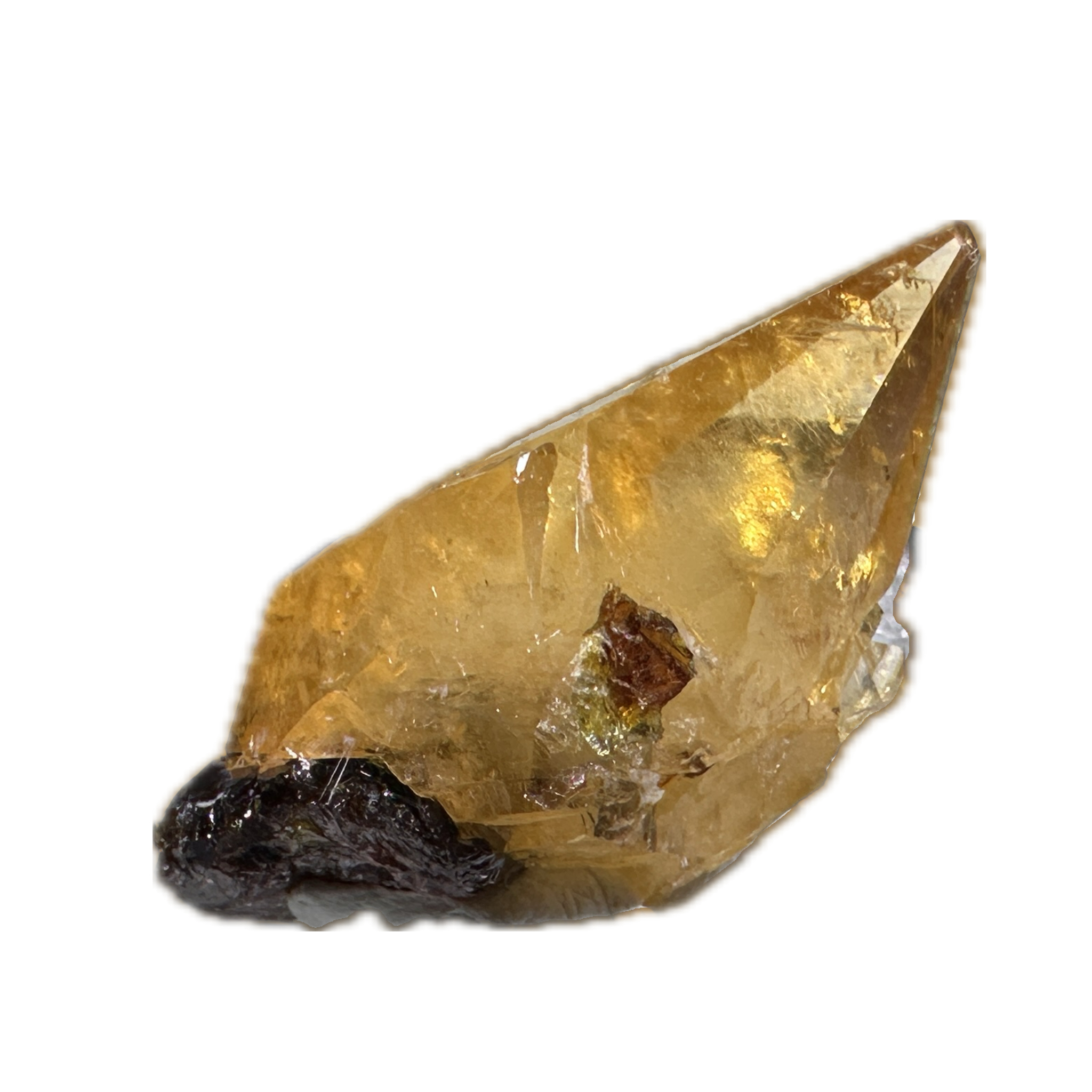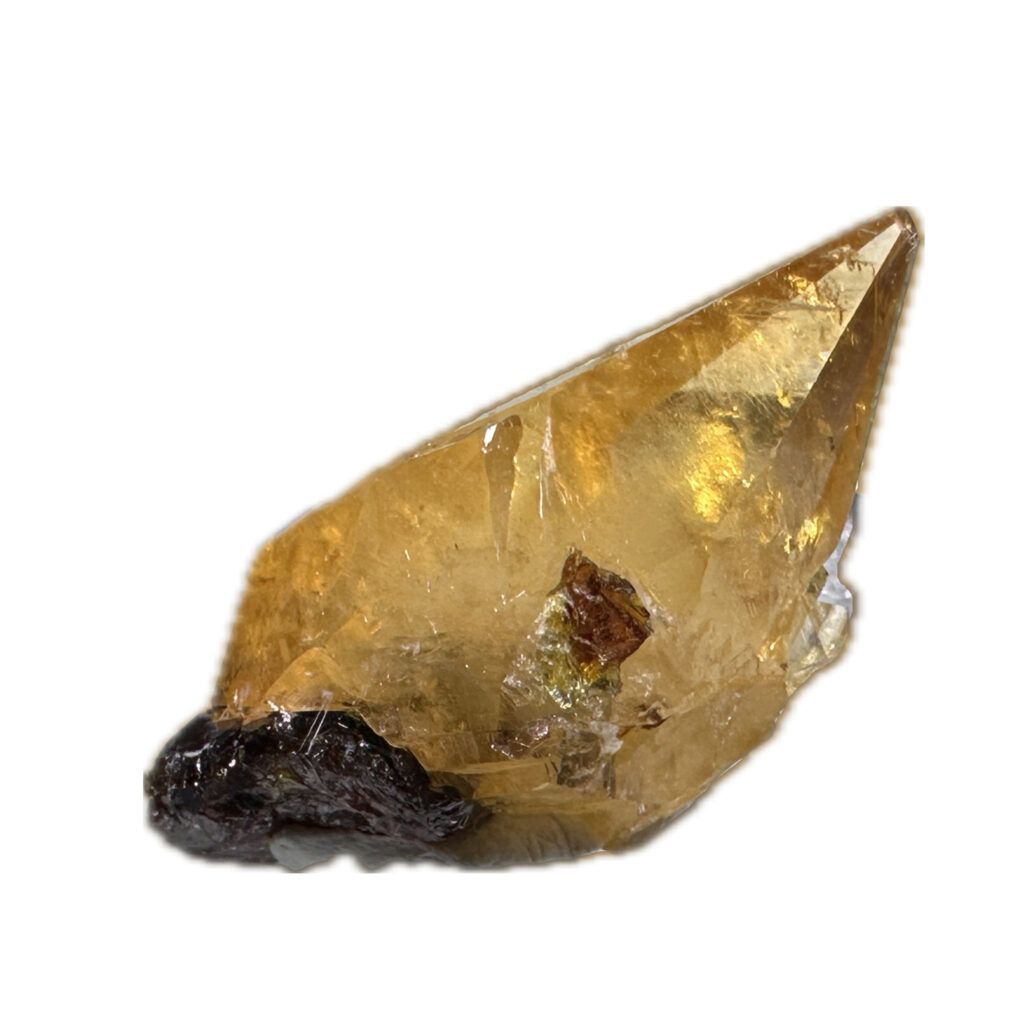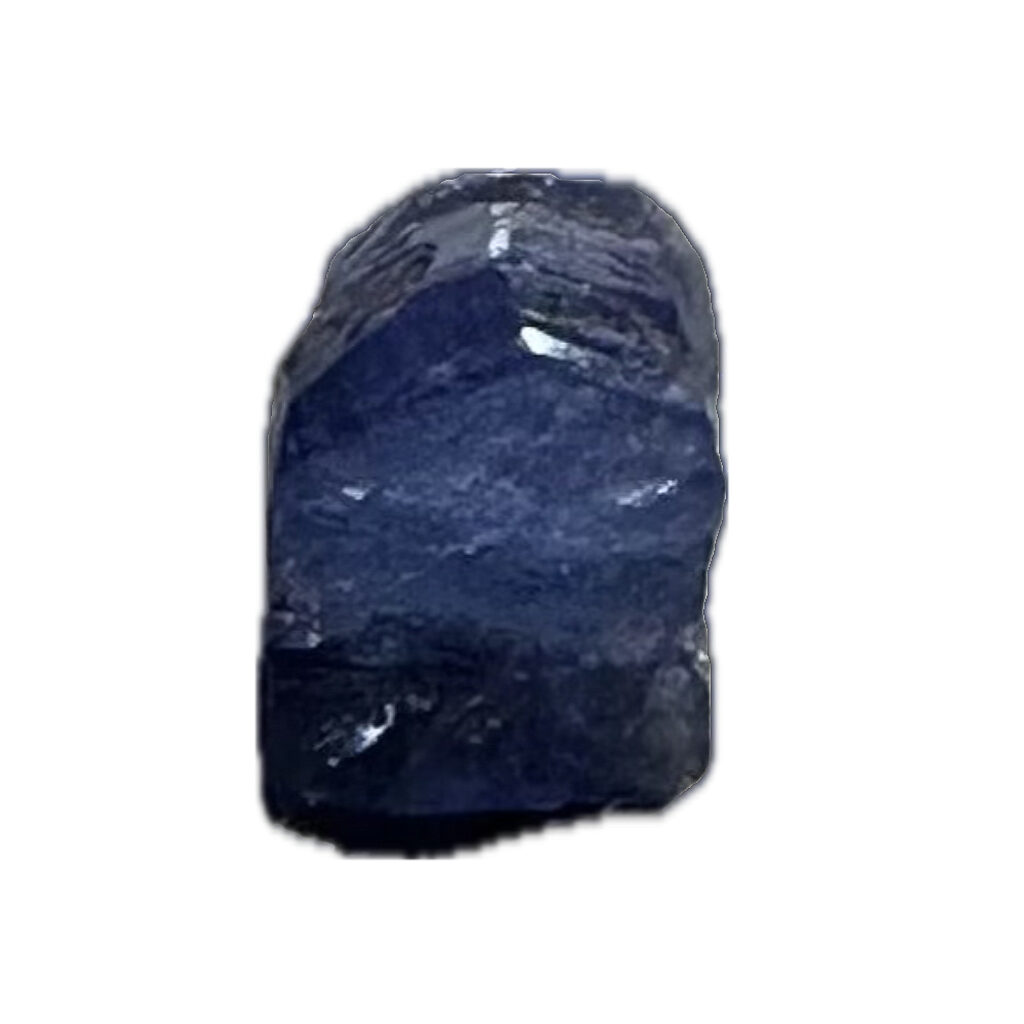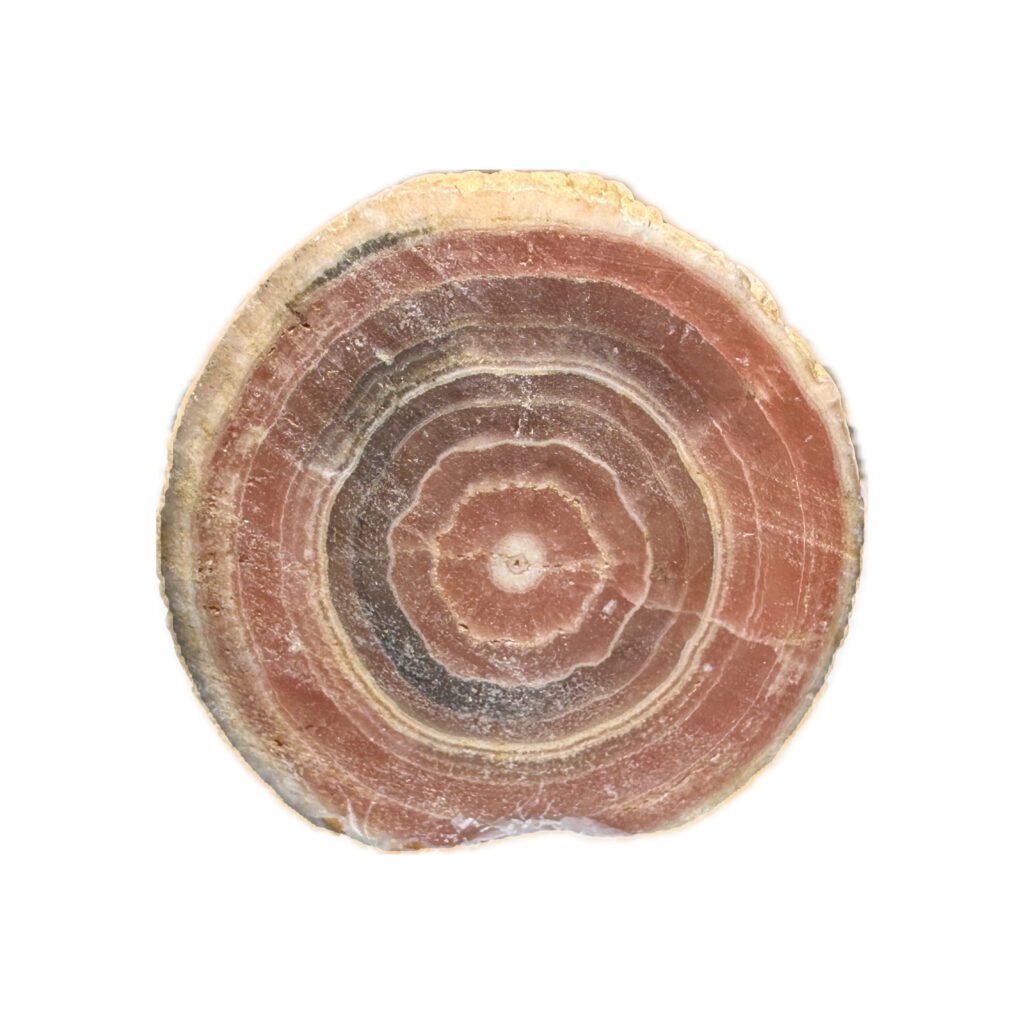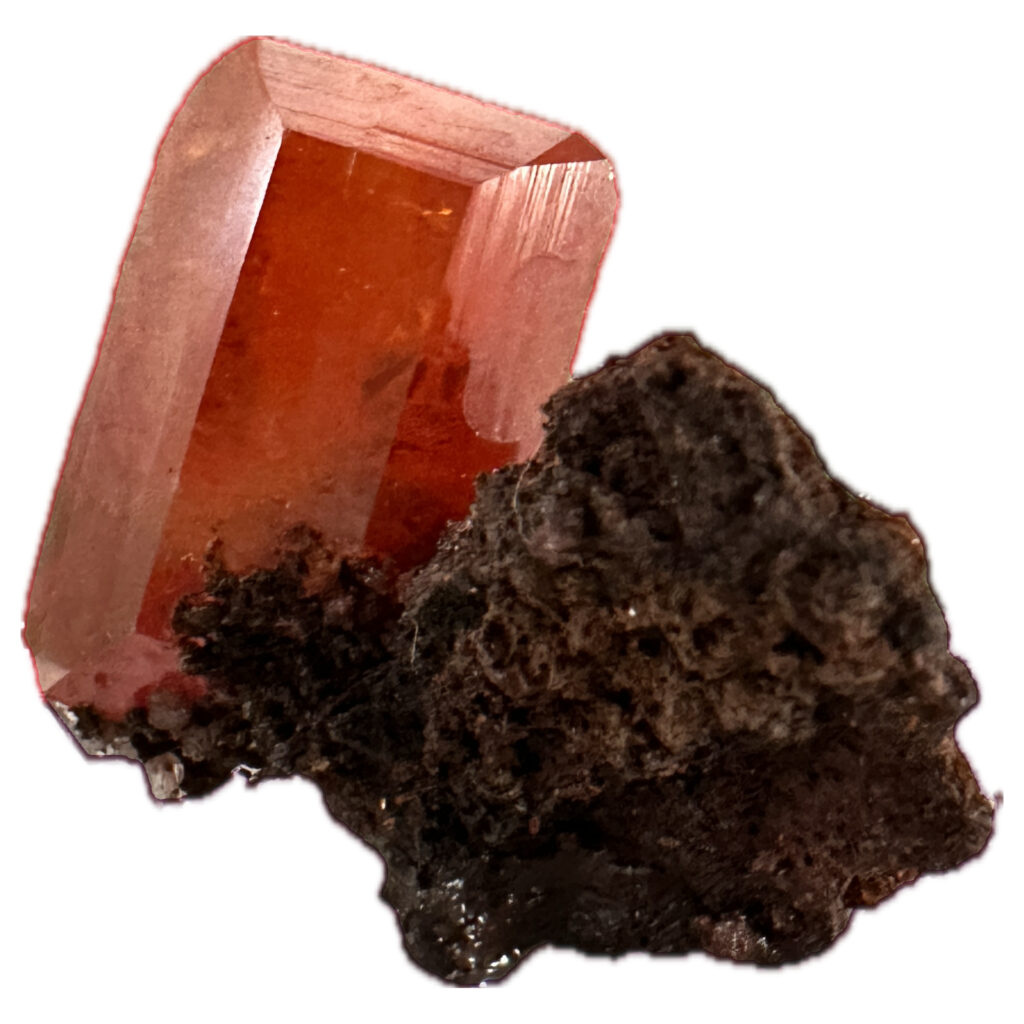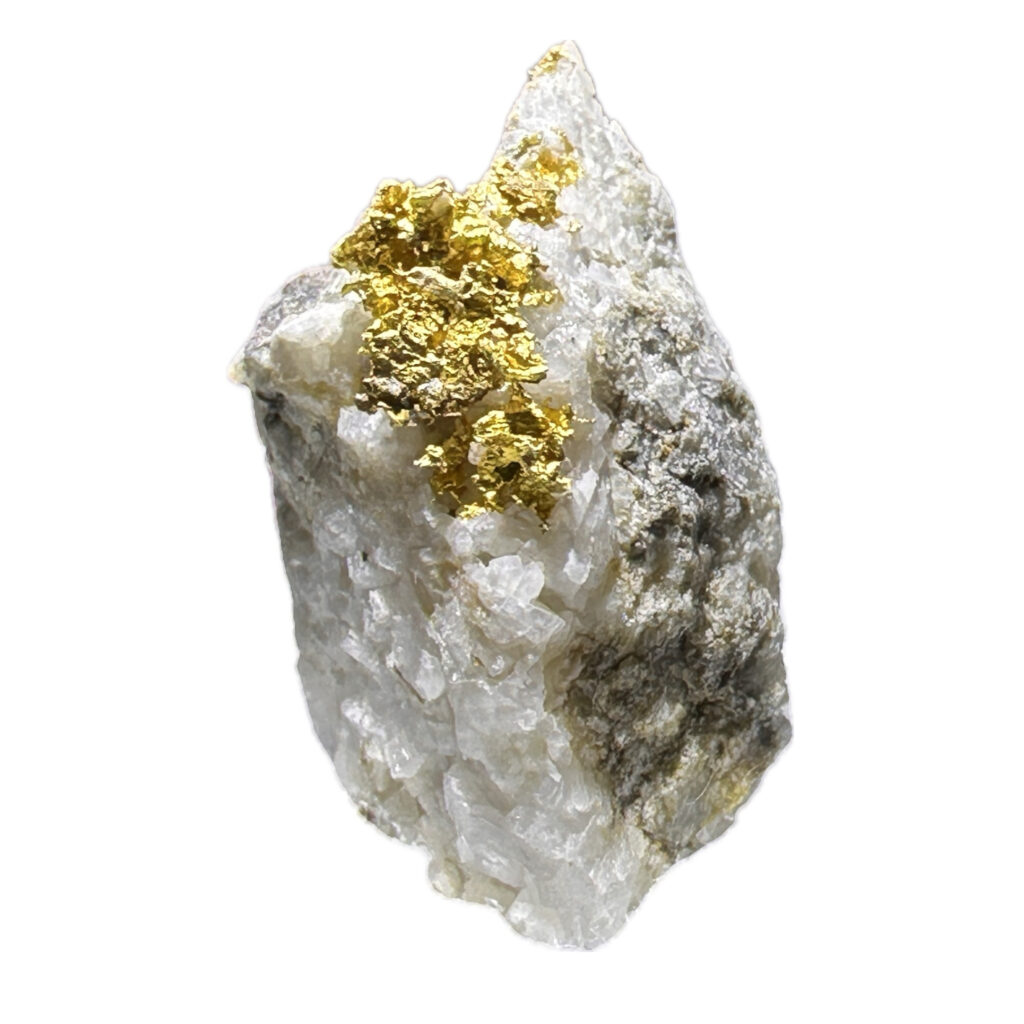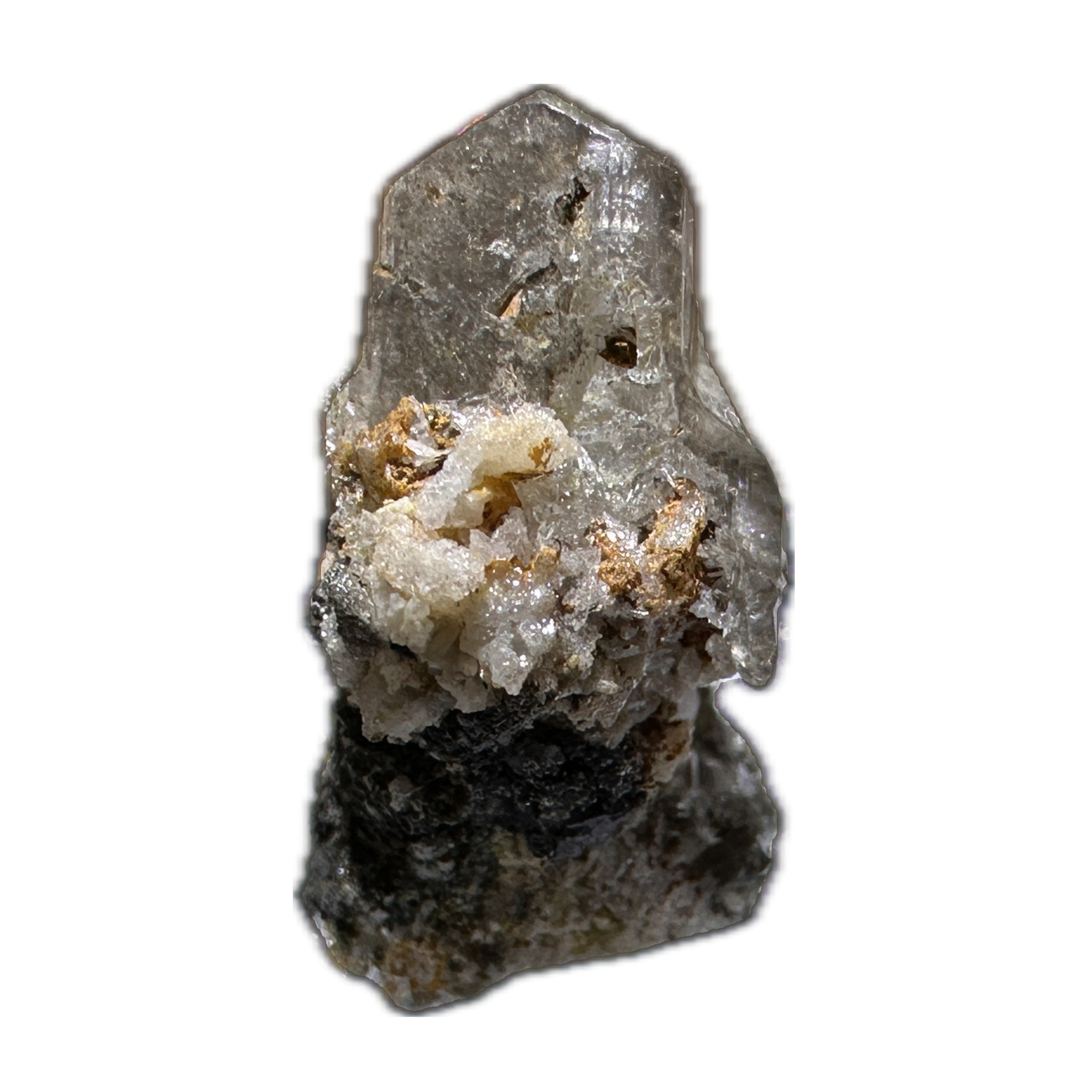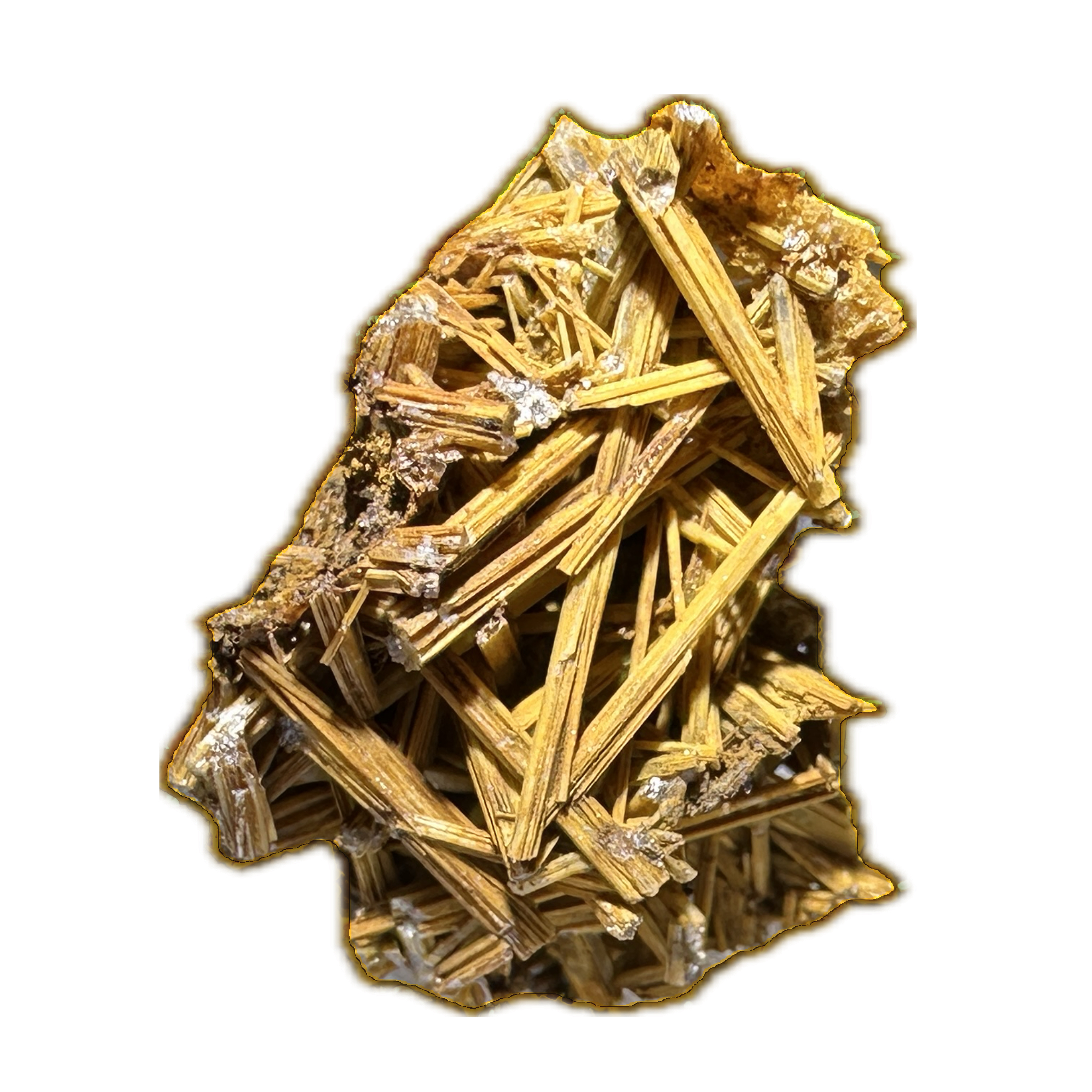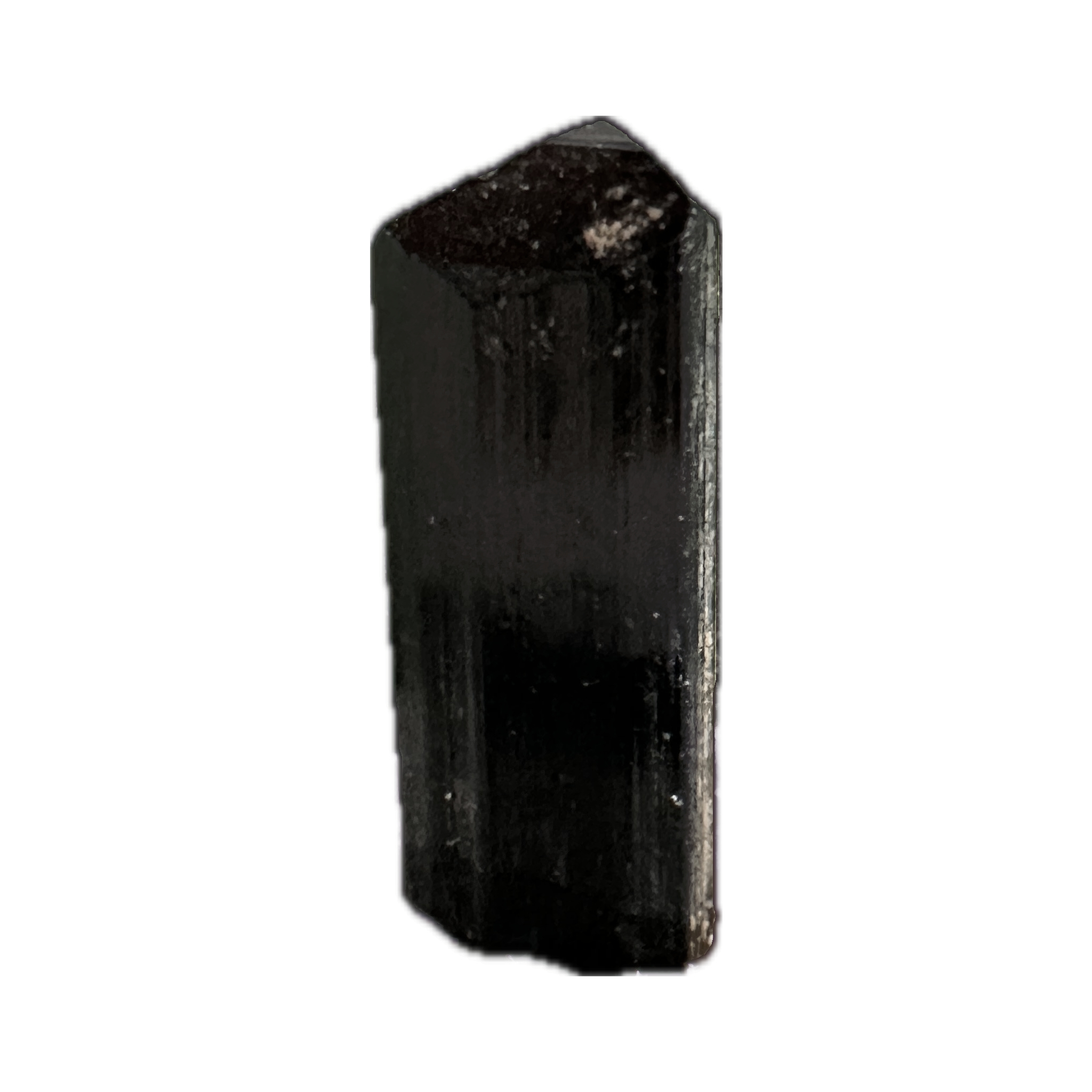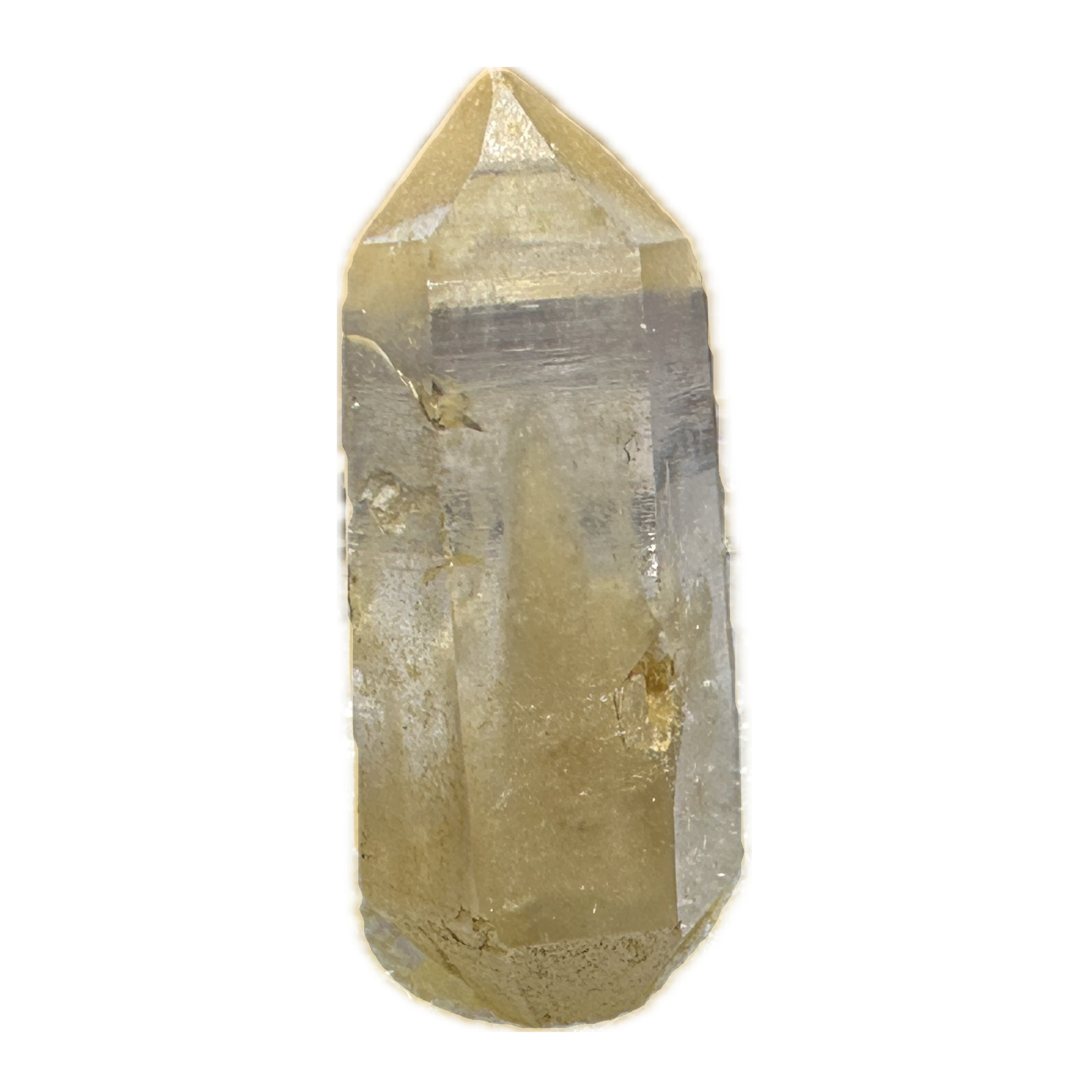Arsenopyrite thumbnail mineral, Mexico.
Arsenopyrite is a sulfide mineral that is notable for its composition, containing both iron (Fe) and arsenic (As). The mineral forms in the orthorhombic crystal system and typically occurs in prismatic or pyramidal crystal habits. Arsenopyrite often has a metallic luster and a silver-white to steel-gray color. It is characterized by its high density and is commonly found in hydrothermal veins associated with other sulfide minerals.
Thumbnail specimens of arsenopyrite are small, exquisite samples that showcase the mineral’s distinctive crystal structure and metallic sheen. These miniature specimens, often measuring only a few centimeters in size, are prized by mineral collectors for their aesthetic appeal. The crystals may exhibit well-defined faces and sharp edges, presenting a fascinating display of the mineral’s natural beauty.
Arsenopyrite thumbnail specimens are sought after not only for their visual appeal but also for their geological significance. The presence of arsenopyrite in these specimens is indicative of specific geological conditions during their formation, such as high-temperature hydrothermal processes. Collectors value these specimens not only for their rarity but also for the insights they provide into the Earth’s dynamic processes.
Due to its association with arsenic, which is toxic, handling arsenopyrite specimens should be done with care, and proper precautions should be taken to avoid exposure. Despite its potential hazards, arsenopyrite remains a captivating mineral specimen that attracts enthusiasts interested in both its scientific and aesthetic aspects.
Thumbnail specimens hold a unique allure in the world of mineral and gemstone collecting, captivating enthusiasts and collectors alike with their petite yet captivating presence. Measuring no more than an inch or so in size, these diminutive wonders possess a distinct charm that sets them apart in the eyes of collectors. To understand why collectors prize thumbnail specimens, we must delve into the fascinating world of mineral collecting, exploring the characteristics and significance that make these tiny treasures so coveted.
Mineral collecting is a hobby as old as civilization itself, with evidence of early human fascination with minerals dating back thousands of years. From ancient civilizations using minerals for ornamental purposes to modern-day collectors meticulously assembling vast collections, the allure of minerals transcends time and culture. Within this vast and diverse hobby, collectors pursue specimens ranging from massive geological formations to minute crystals barely visible to the naked eye. It is within this realm of minuscule marvels that thumbnail specimens carve out their niche, capturing the imagination of collectors with their compact size and exquisite beauty.
At the heart of the appeal of thumbnail specimens lies their diminutive dimensions. Measuring no more than one inch in size, these tiny treasures pack a remarkable amount of geological splendor into a compact package. Despite their small stature, thumbnail specimens often exhibit intricate crystal formations, vibrant colors, and mesmerizing patterns that rival their larger counterparts. Their petite size allows collectors to appreciate the finer details of mineralogy up close, providing a window into the fascinating world of crystallography and mineral formation.
One of the defining characteristics of thumbnail specimens is their rarity. Unlike larger specimens that may be more readily accessible, thumbnail specimens are often limited in quantity and can be challenging to acquire. Their small size makes them easy to overlook in the field, requiring careful searching and meticulous extraction techniques to uncover. As a result, collectors prize thumbnail specimens for their scarcity, viewing them as prized additions to their collections that showcase the beauty and diversity of the mineral kingdom in miniature form.
<img class=”aligncenter wp-image-25070″ src=”https://www.prehistoricoregon.com/wp-content/uploads/2023/11/img_4984-1-1024×1024.jpg” alt=”” width=”575″ height=”575″ />
Thumbnail specimens also hold significant scientific value, offering insights into geological processes and mineral formation. Despite their small size, these specimens provide valuable information about the conditions under which they formed, including temperature, pressure, and chemical composition. By studying thumbnail specimens, scientists can gain a better understanding of Earth’s geological history and the forces that shape our planet. As such, collectors play a crucial role in preserving these specimens for future study, ensuring that valuable geological data is not lost to time.
In addition to their scientific significance, thumbnail specimens hold aesthetic appeal for collectors, who are drawn to their exquisite beauty and intricate detail. Despite their diminutive size, these specimens often display vibrant colors, lustrous surfaces, and geometrically precise crystal formations that captivate the eye. Whether it’s the iridescent hues of a tiny opal, the delicate symmetry of a miniature quartz cluster, or the fiery brilliance of a diminutive garnet, thumbnail specimens showcase the extraordinary diversity of the mineral kingdom in all its splendor.
Collectors are also drawn to thumbnail specimens for their versatility and portability. Unlike larger specimens, which may require specialized display cases or storage solutions, thumbnail specimens can be easily housed in small containers or display cases, making them ideal for collectors with limited space. Their compact size also makes them ideal for travel, allowing collectors to take their prized specimens with them wherever they go and share their passion for minerals with others.
Furthermore, thumbnail specimens often serve as valuable educational tools, providing enthusiasts and novices alike with an opportunity to learn about mineralogy and geology. Their small size and accessibility make them ideal for hands-on exploration, allowing collectors to study mineral properties, crystal structures, and geological formations up close. Many collectors also use thumbnail specimens to educate others about the beauty and diversity of the mineral kingdom, sharing their passion through outreach events, educational programs, and online forums.
Prehistoric 101 (Learn about fossils, minerals, and meteorites)
What is a Mineral?
Discovering Prehistoric Life and Fossils

